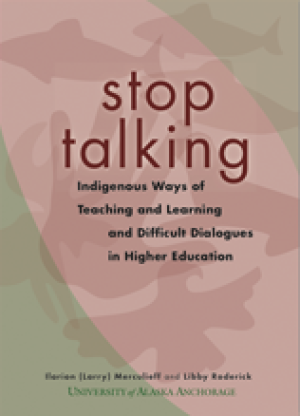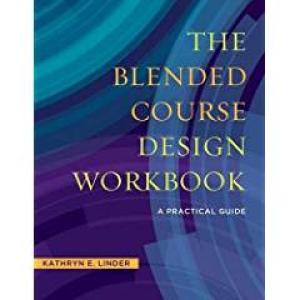Resources
In this article, I explore an ethical and pedagogical dilemma that I encounter each semester in my world religions courses: namely, that a great number of students enroll in the courses as part of their missionary training programs, and come to class understanding successful learning to mean gathering enough information about the world's religious “traditions” so as to effectively seduce people out of them. How should we teach world religions – in public university religious studies courses – with this student constituency? What are/ought to be our student learning goals? What can and should we expect to accomplish? How can we maximize student learning, while also maintaining our disciplinary integrity? In response to these questions, I propose a world religions course module, the goal of which is for students to examine – as objects of inquiry – the lenses through which they understand religion(s). With a recognition of their own lenses, I argue, missionary students become more aware of the biases and presumptions about others that they bring to the table, and they learn to see the ways in which these presumptions inform what they see and know about others, and also what they do not so easily see.
Asynchronous online instruction has become increasingly popular in the field of religious studies. However, despite voluminous research on online learning in general and numerous articles on online theological instruction, there has been little discussion of how to effectively design and deliver online undergraduate courses in religious studies. Drawing on recent research, experiences teaching and learning online, and interviews with colleagues, this paper discusses key principles of effective online instruction. It recommends instructors focus on humanizing their course website, “chunking” their course content, making their approach to the study of religion clear, structuring and monitoring online discussions, prioritizing prompt and constructive feedback, and making course material relevant to learners.
This article provides two short responses to Kathleen M. Fisher's essay “Look Before You Leap: Reconsidering Contemplative Pedagogy,” published in this issue of the journal.
This paper presents a critique of a set of teaching strategies known as “contemplative pedagogy.” Using practices such as meditation, attentive listening, and reflective reading, contemplative inquiry focuses on direct first-person experience as an essential means of knowing that has historically been overshadowed and dismissed by an emphasis on analytical reasoning. In this essay, I examine four problematic claims that appear frequently in descriptions of contemplative pedagogy: (1) undergraduate students have a kind of spiritual hunger; (2) pedagogies focused on cognitive skills teach students only what, not how, to think; (3) self-knowledge fosters empathy; and (4) education needs a new epistemology centered on spiritual and emotional, rather than intellectual, experience. I argue that these claims underestimate the diversity of undergraduate students, the complexity of what it means to think and know, the capacity for self-knowledge to become self-absorption, and the dangers of transgressing the boundaries between intellectual, psychological, and religious experiences. [See as well “Response to Kathleen Fisher's ‘Look Before You Leap,’” by Andrew O. Fort and Louis Komjathy, published in this issue of the journal.]

Click Here for Book Review For 10,000 years, Alaska’s Native peoples have survived and thrived in some of the harshest conditions in the world. During that time, they perfected teaching and learning practices that ensured the survival of their communities and the wellbeing of their natural environments. Those ancient practices offer fresh insights for educators who care about the state of our world and seek ways to make education more relevant and engaging. This book describes a unique higher education project that broke some difficult silences between academic and Native communities by introducing a small group of non-Native faculty members to traditional Alaska Native ways of teaching and learning. It presents a model for a Native-designed and run faculty development intensive, strategies for applying indigenous pedagogies in western learning environments, reflection on education by Alaska Native Elders, and reports from participants on what they learned and what they tried in their classrooms. It is intended to stimulate discussion and reflection about best practices in higher education. (From the Publisher)

Click Here for Book Review The University of Alaska Anchorage and Alaska Pacific University created Start Talking: A Handbook for Engaging Difficult Dialogues in Higher Education, a field manual for professors who wish to engage their students more effectively in conversations about the most important issues of our time. The book addresses themes of academic freedom; classroom safety; rhetoric and debate; race, class and culture; science and religion; and business, politics and social justice. For information about the project, including faculty intensives on difficult dialogues and indigenous ways of teaching and learning, see UAA Initiatives. (From the Publisher)

Daryl G. Smith has devoted her career to studying and fostering diversity in higher education. She has witnessed and encouraged the evolution of diversity from an issue addressed sporadically on college campuses to a reality of the modern university experience. In Diversity’s Promise for Higher Education, Smith brings together scholarly and field research relevant to the next generation of diversity work. The book argues that achieving excellence in a diverse society requires increasing the institutional capacity for diversity while simultaneously working to understand how diversity is tied to better leadership, positive change, research in virtually every field, student success, accountability, and more equitable hiring practices. To become more relevant to society, the nation, and the world while remaining true to their core missions, colleges and universities must continue to see diversity—like technology—as central, not parallel, to their work. In Diversity’s Promise for Higher Education, Smith proposes a set of clear and realistic practices that will help colleges and universities locate diversity as a strategic imperative and pursue diversity efforts that are inclusive of the varied—and growing—issues apparent on campuses without losing focus on the critical unfinished business of the past. In this edition, which is aimed at administrators, faculty, researchers, and students of higher education, Smith emphasizes a transdisciplinary approach to the topic of diversity, drawing on an updated list of sources from a wealth of literatures and fields. The tables have been refreshed to include data on faculty diversity over a twenty-year period and the book includes new information about gender identity, stereotype threat, student success, the growing role of chief diversity officers, the international emergence of diversity issues, faculty hiring, and implicit bias. (From the Publisher)

Click Here for Book Review Blended (also called hybrid) classrooms, in which face-to-face interaction is intentionally combined with online activities to aid student learning, are becoming more and more common. Most recently, “flipped” classrooms have become a popular method for teaching because more time for active learning in-class can be gained by moving content delivery such as lecture to outside-of-class homework using technology tools such as video or lecture capture. The blended model is proving to be an environment that provides more self-directed, technology-mediated learning experiences for students who will be incorporating technology more and more into their professional lives post-college. The Blended Course Design Workbook meets the need for a user-friendly resource that provides faculty members and administrators with instructions, activities, tools, templates, and deadlines to guide them through the process of revising their traditional face-to-face course into a blended format. Providing a step-by-step course design process that emphasizes active learning and student engagement, this book will help instructors adapt traditional face-to-face courses to a blended environment by guiding them through the development of course goals and learning objectives, assignments, assessments, and student support mechanisms with technology integration in mind. It will also help instructors choose the right technologies based on an instructor’s comfort level with technology and their specific pedagogical needs. The book will help each instructor who uses the text to develop a unique course by making choices about their course design based on student learning needs for their chosen topic and discipline. Every component of the workbook has been piloted with faculty designing and implementing blended courses and then revised to better meet the needs of faculty across a range of comfort levels with technology use. The Blended Course Design Workbook includes detailed instructions for each stage of course design alongside specific activities that the reader can complete. The book is unique because it facilitates a step-by-step process for blended course design with specific templates and tools that can be used across disciplines. (From the Publisher)

Click Here for Book Review However personally committed faculty may be to helping students learn, their students are not always as eager to participate in this endeavor, and may react with both active and passive resistant behaviors, including poor faculty evaluations. The purpose of this book is to help faculty develop a coherent and integrated understanding of the various causes of student resistance to learning, providing them with a rationale for responding constructively, and enabling them to create conditions conducive to implementing effective learning strategies. In this book readers will discover an innovative integrated model that accounts for student behaviors and creates a foundation for intentional and informed discussion, evaluation, and the development of effective counter strategies. The model takes into account institutional context, environmental forces, students’ prior negative classroom experiences, their cognitive development, readiness to change, and metacognition. The various chapters take the reader through the model’s elements, exploring their practical implications for teaching, whether relating to course design, assessments, assignments, or interactions with students. The book includes a chapter written entirely by students, offering their insights into the causes of resistance, and their reflections on how participating on this project has affected them. While of great value for faculty, this book is also useful to faculty developers advising future and current faculty, as well as to administrators, offering insight into how institutional values impact teaching practice and student attitudes. (From the Publisher)

Click Here for Book Review Abstract: Preparing a learning portfolio has become a mandatory part of the course work in most clinical professions. Students and educators alike sometimes complain that these mandatory assignments become repetitive and uninspired. However, we all need to be able to speak and write clearly as we work with our colleagues, students and those we care for. In Portfolio To Go, Allan D. Peterkin insists that reflective capacity, critical thinking, creative expression, and narrative competence are attributes that should be developed in every health professional – regardless of the discipline or specialty. Trainees will find over 1000 prompts organized under themes highly relevant to students and educators, including those not formally addressed in class, such as coping with uncertainty and ambiguity, team conflict, and resilience through good self-care. Practical tips for writing effectively and for discussing and evaluating narratives in a helpful, respective manner are provided throughout. Peterkin is a pioneer in emphasizing patient-centred, humanistic care and Portfolio To Go will help to train and develop more reflective practitioners. (From the Publisher)
Wabash Center Staff Contact
Sarah Farmer, Ph.D
Associate Director
Wabash Center
farmers@wabash.edu